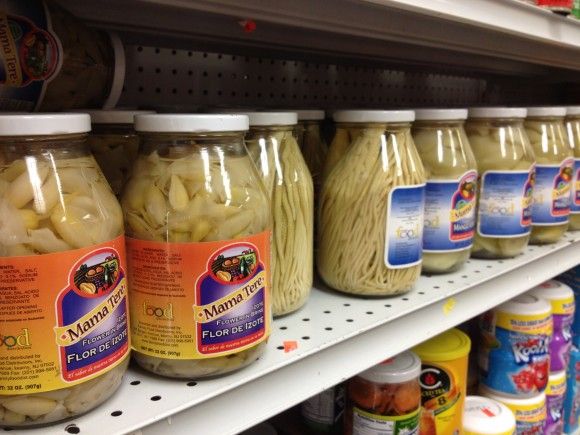A “Little Guatemala” Grows In Bensonhurst

Nohemi takes out her prepaid card from her pocket and sets the time in the dryer. This is her third load this busy morning and, with Nohemi in the eighth month of her third pregnancy, the work has made her physically exhausted.
Her kids, Yulmi and Aarón are running in the MonsterWash (8122 18th Avenue) laundry aisles, enjoying their summer vacation.
The mother has no plans for cooking lunch; if she can finish the laundry soon, maybe she can make something quickly. One of Bensonhurst’s advantages is that she can find almost any kind of ingredient for her traditional Guatemalan dishes, from tamales to the famous Pepian, a meat or chicken stew with home-made pumpkin seed sauce. When she makes “tamales” – three times per year- she takes the time to buy the plantain leaves. Her specialty: pork or chicken.
Since she came to the United States almost nine years ago, she buys groceries in the Italian stores for replacements for the Guatemalan goods she can’t find. They have a variety of Mexican spices, the most similar she can find to those from her native country.
During her three pregnancies, the only craving she could not satisfy is green mangos. Otherwise, Guatemalan stores in Bath Avenue have everything else.
Bensonhurst is home to a growing community of Guatemalans like Nohemi, most of them from indigenous villages in the mountains. Their Mayan faces add more color to the melting pot from the area.
This growing demographic has planted roots along 18th Avenue’s staples: at Milestone Park, men share talks and cigarettes; at Garibaldi Playground, Guatemalan ladies play with their kids in the swings and the fountain; Jireh Restaurant, at 8715 18th Avenue, is where they all enjoy the authentic Guatemalan menu.
Until 2000, Hispanics had a small presence in Bensonhurst; more than half of its 172,129 habitants were born outside the country, but just 8.1 percent came from Latin America – primarily Mexicans and Ecuadorans.
Guatemalan immigrants from the highlands come to this nation’s shores seeking a better life, during and after three decades of civil war. In the Greater Metropolitan Area, an estimated 350,000 Guatemalans have put down roots, but an exact number is hard to peg down; people come and go constantly due to pressure and deportations, according to Claudia Carías, head of Movimiento de Inmigrantes Guatemaltecos en Estados Unidos (MIGUA).
The main meeting point for the Guatemalan community here is the Pentecostal church Jóvenes Cristianos (Young Christians) at 8750 17th Avenue, with almost 1,000 congregants.
In Bensonhurst, the Guatemalan’s presence began ramping up in 1993, according to the Pentecostal church’s founder, Erick Salgado.
“An Italian landlord was the first to open the apartments’ doors for Hispanics in the area,” he said.
Luis Ixmata came in 1999 and he remembers how, with three other friends from indigenous villages in the Guatemalan mountains, he moved into his brother’s apartment on 79th Street.
In 2003, he met that long, black-haired girl who would soon become the mother of his children – Nohemi.
Chapines – Spanish slang for Guatemalans – like Bensonhurst because the rent is cheap and the transportation options provide easy commutes to their Manhattan-area jobs, primarily in construction and restaurants. And those jobs, meager as they may be to most Americans, provide wages that easily beat that of their homeland.
Francisco Con, a construction worker who immigrated in 2008, explains that fellow countrymen earn more than $7.25 per hour in Queens and Brooklyn.
“Here we can earn more; we have subway and buses, we don’t need a car,” he said. “We can live well.”
He and three other roommates share a $1,500-per-month apartment; they share gas, power and cable.
What they have left over, they send home to their wives and children.
According to a 2009 report by the Pew Hispanic Center, New York was home to 60,000 Guatemalans, surpassing New Jersey’s 42,000. Anecdotal data from the Pentecostal church suggests there are almost 50,000 Guatemalans living in Brooklyn and Queens.
Home-sick family men comprise the bulk of the congregation’s numbers.
“They search for Our Lord to maintain focused, trying not to take the wrong way, losing sight of their goals, the reason they came into this country: work hard and get money for their families in Guatemala. [Here in the church] they seek to combat loneliness,” Salgado said.
Women are devoted primarily to raising their children, and those who are still unmarried work in factories and sweatshops, and some as cooks and waiters, says Elias Garcia from a New Jersey-based Guatemalan organization.
When fairs, small markets and festivals come to the area, you can see the Guatemalan highland ladies donning their traditional costumes, the colorful corte (skirt) and huipil (blouse).
Many early immigrants already moved or returned to Guatemala, unable to bring their wives and families, said resident Luis Ixmatá. But the community is still growing. According to Salgado, the community sees at least 60 children born each year.
The dynamism and growth of the Guatemalan community in this neighborhood is palpable in the amount of imported products, especially food, at local stores. On the shelves La Chapincita (6904 New Utrecht Avenue), you can find Horchata de Pinol (flour for “atoles”), fried black beans, traditional chocolate, atoles, pacayas, Izote flower and cane syrup.
Nohemi has satisfied her pacayas cravings well with the canned options she found in the stores. It’s not the same as eating them fresh, but they help her feel closer to her homeland, where she thinks she will return some day
— Carmen Molina Tamacas
This article was originally published in El Diario.




